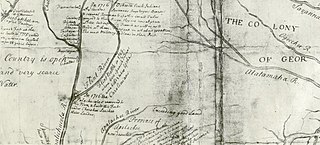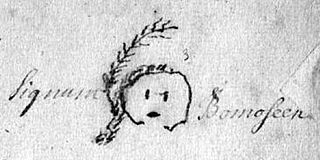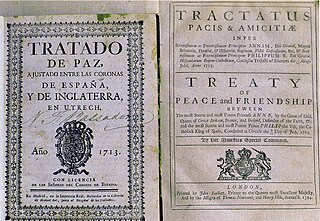 W
WQueen Anne's War (1702–1713) was the second in a series of French and Indian Wars fought in England's Thirteen American Colonies; it took place during the reign of Anne, Queen of Great Britain. In Europe, it is generally viewed as the American theater of the War of the Spanish Succession; in the Americas, it is more commonly viewed as a standalone conflict. It is also known as the Third Indian War or as the Second Intercolonial War in France.
 W
WThe Apalachee massacre was a series of raids by English colonists from the Province of Carolina and their Indian allies against a largely peaceful population of Apalachee Indians in northern Spanish Florida that took place in 1704, during Queen Anne's War. Against limited Spanish and Indian resistance, a network of missions was destroyed; most of the population either was killed or captured, fled to larger Spanish and French outposts, or voluntarily joined the English.
 W
WThe Battle of Bloody Creek was fought on 10/21 June 1711 during Queen Anne's War. An Abenaki militia successfully ambushed British and New England soldiers at a place that became known as Bloody Creek after the battles fought there. The creek empties into the Annapolis River at present day Carleton Corner, Nova Scotia, and was also the location of a battle in 1757.
 W
WLefebvre's Charles Town expedition was a combined French and Spanish attempt under Captain Jacques Lefebvre to capture the capital of the English Province of Carolina, Charles Town, during Queen Anne's War.
 W
WThe Battle of Flint River was a failed attack by Spanish and Apalachee Indian forces against Creek Indians in October 1702 in what is now the state of Georgia. The battle was a major element in ongoing frontier hostilities between English traders from the Province of Carolina and Spanish Florida, and it was a prelude to more organized military actions of Queen Anne's War.
 W
WThe Battle of Fort Albany was an attack by French colonial volunteers and their native allies against the Canadian Hudson's Bay Company outpost of Fort Albany in the southern reaches of Hudson Bay. About 70 Frenchmen and 30 Indians attacked the fort, which was under the command of John Fullartine. Fullartine repulsed the attack, killing eighteen men including the leaders. He lost two men to ambush on their way back to the fort shortly after the attack.
 W
WThe Newfoundland expedition was a naval raiding expedition led by English Captain John Leake between August and October 1702 that targeted French colonial settlements on the North Atlantic island of Newfoundland and its satellite Saint Pierre. The expedition occurred in the early days of Queen Anne's War, as the North American theater of the War of the Spanish Succession is sometimes known.
 W
WThe Siege of Pensacola was two separate attempts in 1707 by English-supported Creek Indians to capture the town and fortress of Pensacola, one of two major settlements in Spanish Florida.
 W
WThe Siege of Port Royal in 1707 was two separate attempts by English colonists from New England to conquer Acadia by capturing its capital Port Royal during Queen Anne's War. Both attempts were made by colonial militia, and were led by men inexperienced in siege warfare. Led by Acadian Governor Daniel d'Auger de Subercase, the French troops at Port Royal easily withstood both attempts, assisted by irregular Acadians and the Wabanaki Confederacy outside the fort.
 W
WThe Siege of Port Royal, also known as the Conquest of Acadia, was a military siege conducted by British regular and provincial forces under the command of Francis Nicholson against a French Acadian garrison and the Wabanaki Confederacy under the command of Daniel d'Auger de Subercase, at the Acadian capital, Port Royal. The successful British siege marked the beginning of permanent British control over the peninsular portion of Acadia, which they renamed Nova Scotia, and it was the first time the British took and held a French colonial possession. After the French surrender, the British occupied the fort in the capital with all the pomp and ceremony of having captured one of the great fortresses of Europe, and renamed it Annapolis Royal.
 W
WThe Quebec Expedition, or the Walker Expedition to Quebec, was a British attempt to attack Quebec in 1711 in Queen Anne's War, the North American theatre of the War of Spanish Succession. It failed when seven transports and one storeship were wrecked and some 850 soldiers drowned in one of the worst naval disasters in British history.
 W
WThe 1704 Raid on Deerfield occurred during Queen Anne's War on February 29 when French and Native American forces under the command of Jean-Baptiste Hertel de Rouville attacked the English frontier settlement at Deerfield, Massachusetts, just before dawn. They burned part of the town and killed 47 villagers. The raiders left with 112 settlers as captives, whom they took overland the nearly 300 miles to Montreal. Some died or were murdered along the way, and 60 were later ransomed by family and community. Others were adopted by Mohawk families and became assimilated into the tribe. In this period, the English and their Indian allies were involved in similar raids against French villages along the northern area between the spheres of influence.
 W
WThe Raid on Grand Pré was the major action of a raiding expedition conducted by New England militia Colonel Benjamin Church against French Acadia in June 1704, during Queen Anne's War. The expedition was allegedly in retaliation for a French and Indian raid against the Massachusetts frontier community of Deerfield earlier that year.
 W
WThe Raid on Haverhill was a military engagement that took place on August 29, 1708 during Queen Anne's War. French, Algonquin, and Abenaki warriors under the command of Jean-Baptiste Hertel de Rouville descended on Haverhill, then a small frontier community in the Province of Massachusetts Bay. In the surprise attack, 16 people were killed and another 14 to 24 were taken captive. A rapid militia muster gave chase, and in a skirmish later in the day, nine of the French and Indian party were killed and some of their prisoners escaped.
 W
WThe Battle of St. John's was the French capture of St. John's, the capital of the British colony of Newfoundland, on 1 January 1709 [O.S. 21 December 1708], during Queen Anne's War. A mixed and motley force of 164 men led by Joseph de Monbeton de Brouillan de Saint-Ovide, king's lieutenant to Philippe Pastour de Costebelle, the French governor of Plaisance, quickly overwhelmed the British garrison at St. John's, and took about 500 prisoners.
 W
WThe Siege of St. John's was a failed attempt by French forces led by Daniel d'Auger de Subercase to take the fort at St. John's, Newfoundland during the winter months of 1705, in Queen Anne's War. Leading a mixed force of regulars, militia, and Indians, Subercase burned much of the town and laid an ineffectual siege against the fort for five weeks between late January and early March 1705. Subercase lifted the siege after running out of provisions and gunpowder.
 W
WThe Siege of St. Augustine occurred in Queen Anne's War during November and December 1702. It was conducted by English provincial forces from the Province of Carolina and their native allies, under the command of Carolina's governor James Moore, against the Spanish colonial fortress of Castillo de San Marcos at St. Augustine, in Spanish Florida.
 W
WThe Treaty of Portsmouth, signed on July 13, 1713, ended hostilities between Eastern Abenakis with the British provinces of Massachusetts Bay and New Hampshire. The agreement renewed a treaty of 1693 the natives had made with Governor Sir William Phips, two in a series of attempts to establish peace between the Wabanaki Confederacy and colonists after Queen Anne's War.
 W
WThe Peace of Utrecht is a series of peace treaties signed by the belligerents in the War of the Spanish Succession, in the Dutch city of Utrecht between April 1713 and February 1715. The war involved three contenders for the vacant throne of Spain, and involved much of Europe for over a decade. The main action saw France as the defender of Spain against a multinational coalition. The war was very expensive and bloody and finally stalemated. Essentially, the treaties allowed Philip V to keep the Spanish throne in return for permanently renouncing his claim to the French throne, along with other necessary guarantees that would ensure that France and Spain should not merge, thus preserving the balance of power in Europe.